Tours, Attractions and Things to Do in Nikkō
Nikkō Travel Guide
Nikkō (日光市, Nikko) is a city located 150 kilometres north of Tokyo (東京都) in Tochigi Prefecture, at the entrance to the Nikkō National Park (日光国立公園). It is famous for its stunning mountain scenery and natural beauty.
Nikkō is also home to several temples and shrines that have been recognised as a UNESCO World Heritage Site since 1999, with the Tōshō-gū Shrine (Nikkō Tōshō-gū, 日光東照宮) being its most renowned and main attraction.
Find out more about the city's rich history and culture in our Nikkō travel guide.
Nikkō Tours
Nikkō's gorgeous lake, waterfalls, hot springs (onsen), rich ancient culture, and deep reverence for the surrounding mountains offer a peaceful getaway from the rush of city life.
Nikkō offers a range of tours for both individuals and families:
- Day Trips to Nikkō from Tokyo. A day trip to Nikkō is a popular choice among many visitors. The train ride from Tokyo takes just two hours, giving tourists plenty of time to explore the city's main attractions.
- Longer Stays. Tours lasting 2-4 days are particularly popular, allowing for a more-in-depth exploration of the city as well as a chance to relax in one of the charming hot spring ryokans, which are perfect for restoring health and vitality.
Best Time to Visit Nikkō
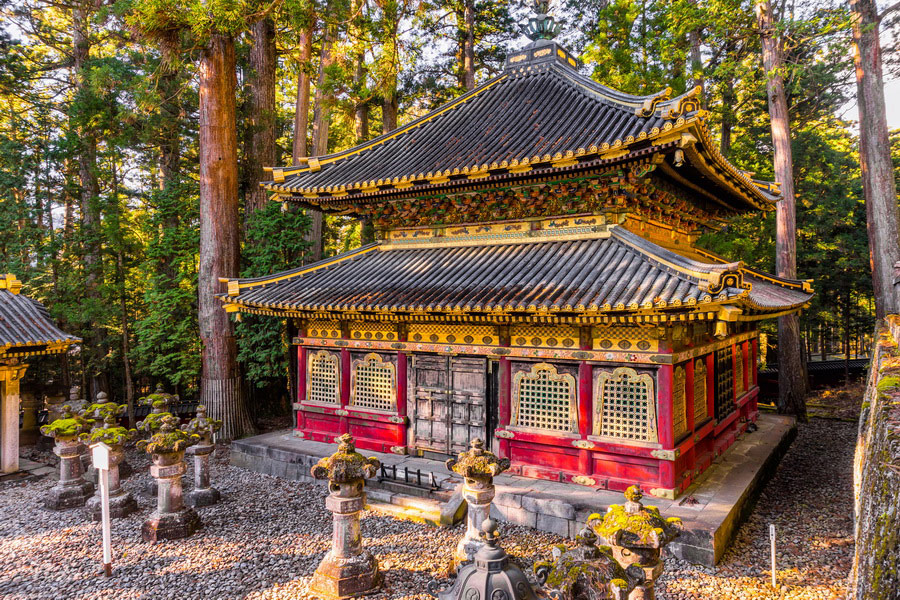
Tours to Nikkō are available all year round, but there are certain seasonal peaks when tourist activity is at its highest.
- Summer (mid-July to early September). The weather at this time is the nicest with temperatures reaching 25-27 °C. In September, when the rains begin, tourist activity decreases significantly.
- Cherry Blossom Season (mid to late April). Cherry blossoms in Nikkō bloom a little later than in popular cities such as Tokyo and Kyoto (京都市). If you miss the blossoms in those cities, you can still catch them in the mountains of Nikkō. Many of Nikkō's famous festivals, including the Nikko Toshogu Shrine Autumn Festival (日光東照宮秋季大祭) (Yayoi Matsuri, 弥生祭り), are held during the cherry blossom season.
- Autumn (October): Autumn in Nikkō is exceptionally beautiful, attracting many visitors for the spectacular foliage. However, be aware that this is also a time of high traffic congestion.
During the peak tourist seasons of spring (April-May), summer (June), and autumn (October-November), the Nikkō City Tourism Association offers free guided tours. These tours are available on Wednesdays, Saturdays, and Sundays from 10:00 A.M. to 2:00 P.M. They include a one-hour walk with certified English-speaking guides through the main UNESCO World Heritage sites.
History of Nikkō
Nikkō's history dates back to the 8th century, when the Buddhist monk Shōdō Shōnin (735–817) founded the Rinnō-ji temple. In the 17th century, the city saw the construction of Tōshō-gū, its most famous Shinto shrine, which serves as the mausoleum of Tokugawa Ieyasu (1543-1616), the founder of the Tokugawa shogunate (徳川幕府).
Around the same time, some 200,000 cedar trees were planted around the shrine, of which more than 12,000 still exist today, forming three famous avenues of 400-year-old cedars.
Since the late 19th century, Nikkō has become a popular resort. Today, it is one of the most visited cities in Japan and has even been ranked in the top 5 best places to visit in Japan by the U.S. News & World Report media.
Things to Do in Nikkō
Landmarks and Attractions in Nikkō
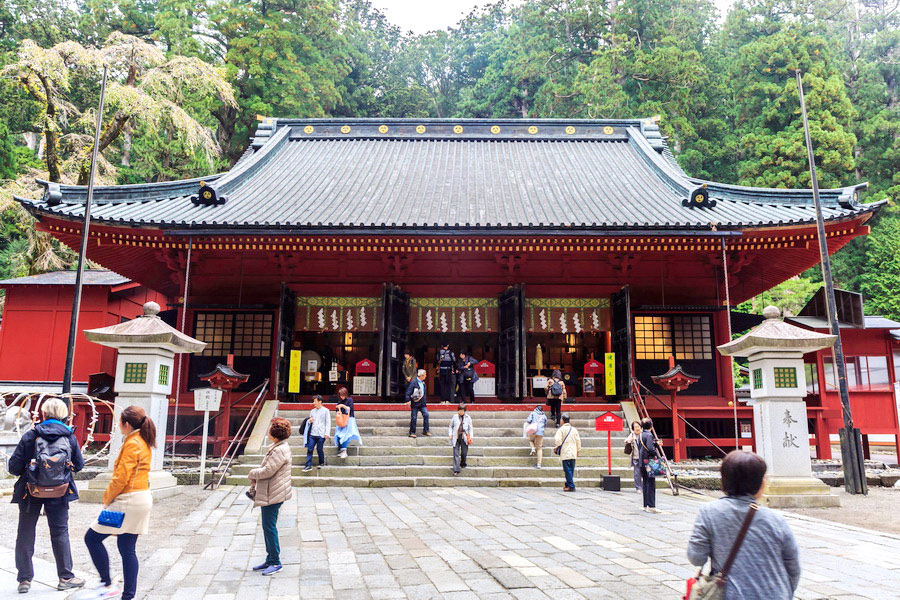
Nikkō's temples and shrines are steeped in ancient history and hold great cultural significance. The city is unique in its long-standing fusion of Japan's two major religions, Shintoism (神道) and Buddhism (仏教), under the teachings of Shugendō (修験道), a highly syncretic religion. In the late 19th century, however, political changes led to the division of the once unified temples, known collectively as Nikkosan, into separate Shinto and Buddhist sites. As a result, two Shinto shrines and one Buddhist temple remain today. These three main complexes, comprising over 100 buildings, have been a UNESCO World Heritage Site since 1999.
Main Nikkō Temples and Shrines:
- Tōshō-gū Shrine (東照宮, Toshogu): This is the main Shinto shrine in Nikkō, built in honour of Tokugawa Ieyasu, the founder of the Tokugawa Shogunate (1603-1868). It is Ieyasu's burial place and the most revered of all Tōshō-gū shrines in Japan. The complex consists of more than 50 buildings, including 8 national treasures, the most famous of which is the ornate Yomeimon Gate (陽明門), considered to be the most beautiful gate in Japan.
- Futarasan Shrine (二荒山神社): One of the largest temple complexes, Futarasan covers an area of 34 square kilometres and includes both religious sites and natural attractions. It is also home to the iconic sedge Shinkyō Bridge (神橋), sometimes called the Snake Bridge. According to legend, two sacred snakes formed the bridge to help the monk Shōdō Shōnin cross the Daiya River.
- Rinnoji Temple (輪王寺, Rinnōji): The oldest temple in Nikkō, Rinnō-ji is most renowned for its main hall, Hondō, which houses three golden Buddha statues, each over 7 metres in height. The temple complex also includes several notable buildings, such as the Treasure House, Taiyūin(大猷院) Mausoleum, and Chūzenji Temple.
Nikkō National Park
Nikkō National Park spans over 1,149 square kilometres and covers not only Tochigi Prefecture but also the neighbouring Fukushima (福島県) and Gunma (群馬県) prefectures. The park is divided into two main zones: the northern zone, which includes the Nasu volcanic belt, and the southern zone, further subdivided into Nikkō, Shiobara, and Kinugawa.
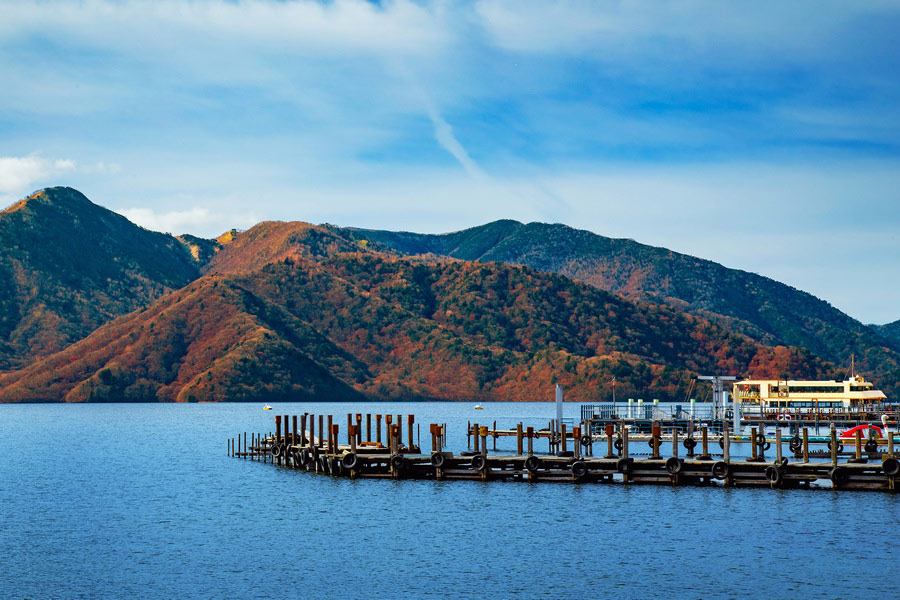
Famous Natural Sites in the Park:
- Mountains: The mountains of Nikkō have a sacred significance and have long been central to the religious practice of Shugendō, where ascetics sought spiritual strength through isolation and meditation in nature. Notable mountains include Mt. Hangetsuyama (半月山) (1,737 metres), Mt. Nantai (男体山) (2,486 metres) and Mt. Nikkō-Shirane (日光白根山) (2,578 metres).
- Mt. Nantai: The most famous of these peaks, Mt. Nantai is an active stratovolcano and one of the most sacred sites in Nikkō. Its ancient name, Futāra-san (二荒山), is the name of the shrine at the foot of the mountain.
- Lake Chūzenji: Formed about 20,000 years ago, Lake Chūzenji lies at the foot of Mt. Nantai and is Japan's highest lake at 1,269 metres altitude. A scenic hiking trail circles the lake for 20 kilometres, with viewing platforms along the way. The town of Chūzenji Onsen, on the eastern shore, is home to one of the best hot springs in Nikkō.
- Waterfalls: Kegon Waterfall (華厳の滝) is the most famous waterfall in Nikkō, with a height of 97 metres. It is one of the three most beautiful waterfalls in Japan, along with Nachi Waterfall (那智滝) (133 metres) and Fukuroda Waterfall (袋田の滝) (120 metres). Other popular waterfalls in Nikkō include Kirifuri Waterfall (霧降の滝), Ryūzu Waterfall (竜頭ノ滝), and Yudaki Falls (湯滝).
Entertainment and Parks in Nikkō
Nikkō offers a wide variety of recreational activities, making it a great resort destination year-round. In the warmer months, visitors can enjoy hiking or taking a scenic cruise around the lake, while in the winter there are opportunities for skiing and snowboarding.
Hiking

From April to September, hiking is one of the most popular activities in Nikkō. There are dozens of trails in the area, connecting to major attractions and offering stunning views. Routes range from short 2-3-kilometre walks, such as the Ryuo Gorge Walk (龍王峡ウォーク), to more challenging hikes, such as the 11-kilometre route from Mt. Hangetsuyama to Lake Chūzenji or the nearly 12-kilometre route from Mt. Shazan (社山) to Chūzenji Temple, which takes about 4 to 5 hours to complete.
A popular hiking route is the Kanman-ga-fuchi Loop (憾満ヶ淵ループ), which passes through the scenic Kanman-ga-fuchi Gorge. Along the way, hikers can see the Narabi Jizo, which are about 70 jizo statues with red hats, which are believed to protect children and travellers.
Lookouts along the trail offer panoramic views, the most famous being the lookout on Mt. Hangetsuyama, which offers a stunning view of Lake Chūzenji and Mt. Nantai.
Water Activities
Visitors can take boat trips on Lake Chūzenji or try more adventurous activities such as rafting and canoeing on the Kinugawa River (鬼怒川).
Winter Activities
Nikkō's mountains are perfect for skiing and snowboarding in the winter. Skiing lessons are available for both adults and children, with instructors offering private lessons.
Another winter highlight is the Yunishigawa Onsen Snow House Festival (Yunishigawa Kamakura Festival, 湯西川温泉かまくら祭), where small snow houses are built and lit with candles, creating a magical atmosphere.
Recreational Activities
Visiting an onsen is one of the best ways to unwind in Nikkō, regardless of the season. The Japanese believe that soaking in hot springs greatly improves both physical and mental well-being. Nikkō is home to several famous onsens, including:
- Kinugawa Onsen (鬼怒川温泉): The most popular onsen in Nikkō.
- Other Onsens: Kawaji Onsen, Yunishigawa Onsen (湯西川温泉), Chūzenji Onsen, and Nikkō Onsen.
Parks
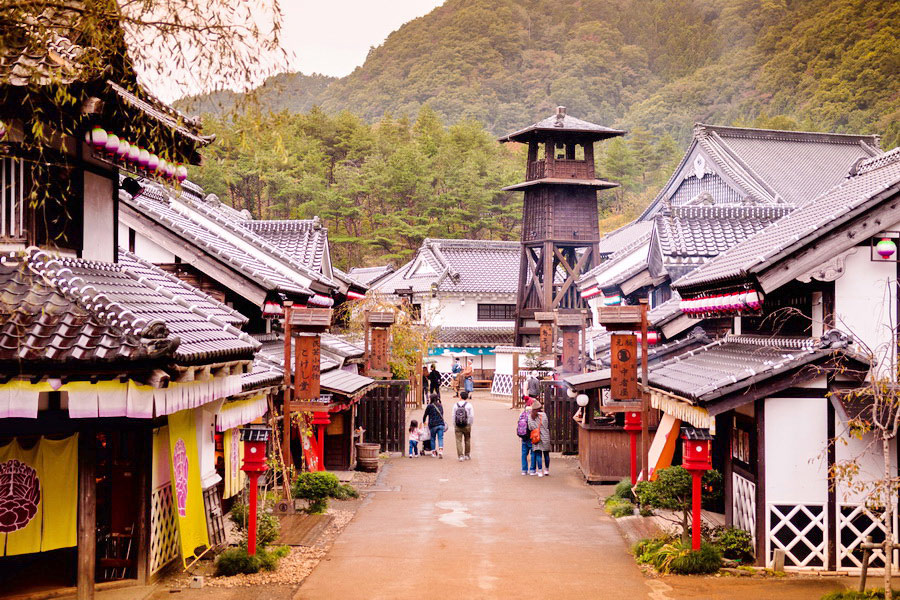
In addition to the huge Nikkō National Park, there are some other parks in the area that are worth exploring:
- Edo Wonderland Nikkō Edomura (江戸ワンダーランド 日光江戸村): A theme park that recreates the atmosphere of the Edo period (1603-1867). It offers ninja shows and the chance to dress up as a samurai or princess, which is especially popular with children.
- Nikkō Daiyagawa Park (日光だいや川公園): Located along the Daiya River, this park offers areas for sports, camping, and family picnics in nature.
- Suginamiki Koen Park (杉並木公園) (Nikkō Cedar Park): Suginamiki Koen Park (Nikkō Cedar Park) is home to an ancient avenue of over 12,000 cedars, creating a tranquil atmosphere with refreshing, health-promoting air.
Nikkō Museums
Nikkō is home to several museums, each offering unique insights into the natural and cultural history of the city.
- Natural Science Museum (栃木県立日光自然博物館): This museum provides visitors with detailed information about Nikkō's flora and fauna. One of its highlights is a large 4 x 20-meter screen showing a high-quality video entitled Four Seasons of Okunikko. The museum also offers guided tours for hiking in the Nikkō mountains. Visitors can purchase hiking equipment and souvenirs at the museum's shop.
- Trick Art Pia Museum (とりっくあーとぴあ日光): The museum offers a playful, interactive experience by modifying famous works of art to create optical illusions. The museum aims to make the high art accessible to the public. Visitors are encouraged to touch the exhibits and take creative, memorable photos.
- Ashio Copper Mine Museum (足尾銅山観光): This museum preserves the history of the Ashio Copper Mine, which operated from the 16th to the 20th century. The mine reached its peak in the 19th century, producing 40% of Japan's copper at its greatest. However, it was also the site of Japan's first major pollution crisis and the miners' revolt of 1907, resulting in the formation of the country's environmental movement. In the 20th century, the mine and its surrounding area underwent extensive reforestation and ecological restoration efforts.

Shopping
Nikkō offers a variety of shopping experiences, from large malls to small speciality shops that reflect the city's culture and traditions.
- Nikkō Landmark Shopping Mall: Located in the Imaichi district, this well-known mall stays open daily until 9:00 P.M. It offers a range of household supplies, food, and clothing, making it convenient for visitors.
- Fujiya Yuba Store: This store specialises in yuba, a traditional soy product popular in Nikkō. Unlike restaurant offerings, Fujiya Yuba sells dried, packaged varieties that have a longer shelf life - perfect for taking home as a unique souvenir.
- Kousyuuya: A shop dedicated to dragon art, offering both ready-made dragon paintings and custom commissions. Visitors can request a piece tailored to their preferred size, colour, and design.
- Cocon Nikkō Kimono Rental Shop: This shop provides tourists with the opportunity to experience Japanese culture by wearing traditional kimonos. It offers a variety of kimonos—men's, women's, and children's—ranging from ancient to modern styles. Visitors can also rent kimonos for photo shoots around the city.
- Rondo Antique Shop: A large store specializing in art and household items with a distinct Japanese aesthetic, perfect for those looking to bring a piece of Japanese heritage home.
Nikkō Food
What to Eat in Nikkō

One of Nikkō’s signature delicacies is Yuba (tofu skin) (ゆば), a traditional Japanese item made from the film of boiled soy milk. Rich in protein, yuba serves as a healthy alternative to meat and has been a staple of the vegetarian Shojin ryori diet followed by Buddhist monks for centuries. Yuba is also believed to have several health benefits, contributing to skin rejuvenation and overall wellness.
Soba (そば or 蕎麦), a dish made with buckwheat noodles, is another local favourite. Soba is so popular in Nikkō that, until 2020, the city used to host the Nikkō Soba Festival (日光そばまつり). Although the festival is no longer held, visitors can still enjoy excellent soba dishes at many restaurants throughout the city.
These, along with other local and traditional Japanese dishes, can be found in Nikko's cafes and restaurants. Some of the most popular establishments are:
- Hippari Dako: A small, inexpensive cafe that is popular with tourists. It stands out for its unique decor—walls covered with stickers and handwritten customer reviews.
- Gyoza no Umechan (餃子のうめちゃん): A Japanese restaurant specialising in gyoza, a dish similar to dumplings or ravioli.
- Komekichi Kouzushi: A traditional Japanese restaurant that offers two dining options: sitting at a standard table or dining in a more traditional setting with a low table and tatami mats on the floor.
- Ramen Bonten Nikkō (ラーメン梵天 日光店): An affordable ramen restaurant located within walking distance of the train station, making it a convenient stop for a post-travel meal.
- Sushi Kurosaki (鮨 くろさき): A sushi and seafood restaurant near Lake Chūzenji and Kegon Waterfalls. It's a great place to grab lunch after exploring the lake and visiting the Kegon Falls observation deck.
- Nikkō Guruman's Wagyu Steakhouse (日光グルマンズ和牛): A restaurant that specialises in Japanese Wagyu steak, offering high-quality meals for meat lovers.
How to Get to Nikkō
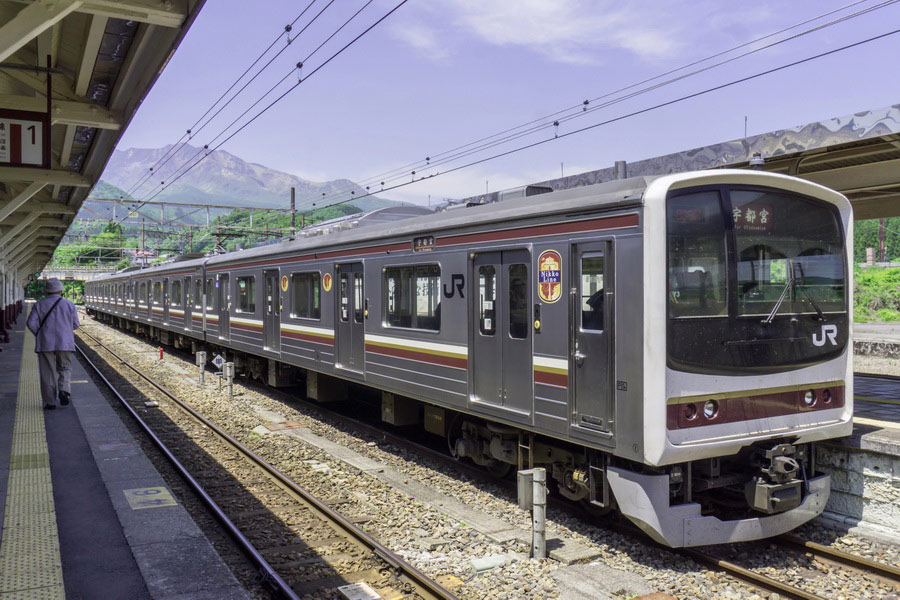
The easiest way to get to Nikkō from Tokyo is to take the Tobu Railway (東武鉄道) from Asakusa Station (浅草駅) to Tobu-Nikkō Station (東武日光駅). The trip takes about 2 hours and costs between ¥3,000 and ¥3,500.
Alternatively, you can take the JR/Tobu Limited Express from Shinjuku Station (新宿駅) in Tokyo. This route also takes about 2 hours but costs slightly more—about ¥ 4,000.
JR Pass holders (ジャパンレールパス) can travel to Nikkō by changing at Utsunomiya Station (宇都宮駅). The entire trip takes just over 1.5 hours. From Utsunomiya, take the JR Nikkō Line to Nikkō Station (日光駅). The trip is fully covered by the JR Pass, but without it, the fare is ¥5,000 or more.
City Transport
Nikkō has a well-developed transport system, with buses connecting the city’s popular tourist attractions and surrounding areas. Many visitors opt for Nikkō Passes to save on transportation costs. There are two types of passes available:
- Nikkō World Heritage Area Pass:
- Validity: 2 days
- Price: ¥2,120 (unchanged throughout the year)
- Includes: Round-trip train travel from Tokyo (Asakusa Station) to Nikkō, train travel to the Kinugawa Onsen area, and unlimited rides on the World Heritage bus around central Nikkō.
- Nikkō All Area Pass:
- Validity: 4 consecutive days
- Price: ¥4,780 (April to November) or ¥4,160 (December to mid-April)
- Includes: All transport covered by the World Heritage Area Pass, plus additional transport in the Okunikko area. With this pass, visitors can also take boat rides on Lake Chuzenji and enjoy the cable car rides in the mountains.
In addition to public transport, visitors can explore the city by rented car. Daily rental prices range from ¥7,000 to ¥23,000, depending on the type of vehicle.
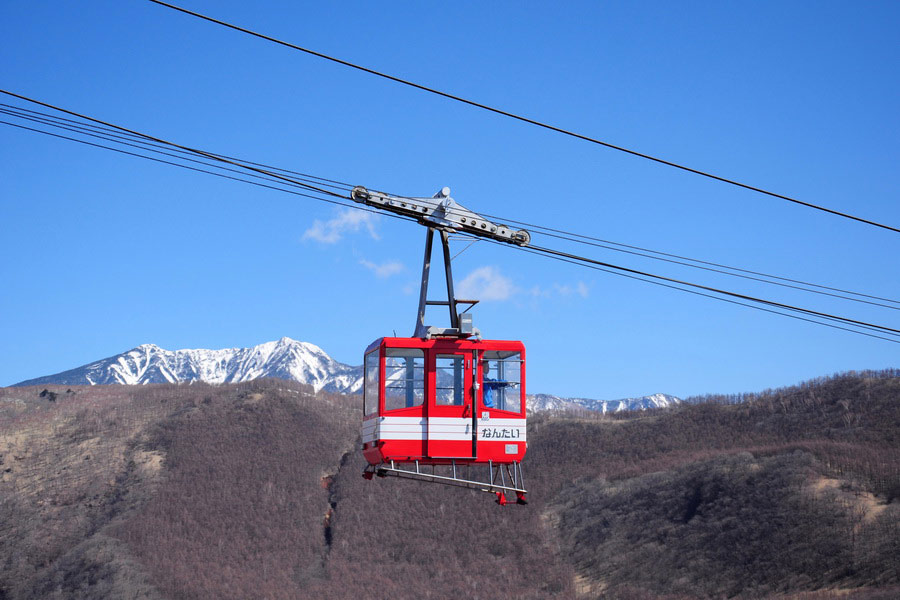
Security
Nikkō is a safe destination for both group and individual travellers, with a very low crime rate. The locals are polite and helpful, making visitors feel welcome.
As one of Japan's main tourist centres, Nikkō has plenty of English language support. Signs display information in English, and police officers on the streets are available to help. Most staff at bus and train stations, as well as in cafes and public places, also speak English and are willing to assist in a variety of situations. The city also has reliable mobile phone coverage and Wi-Fi, allowing you to remain in touch with family and friends.


